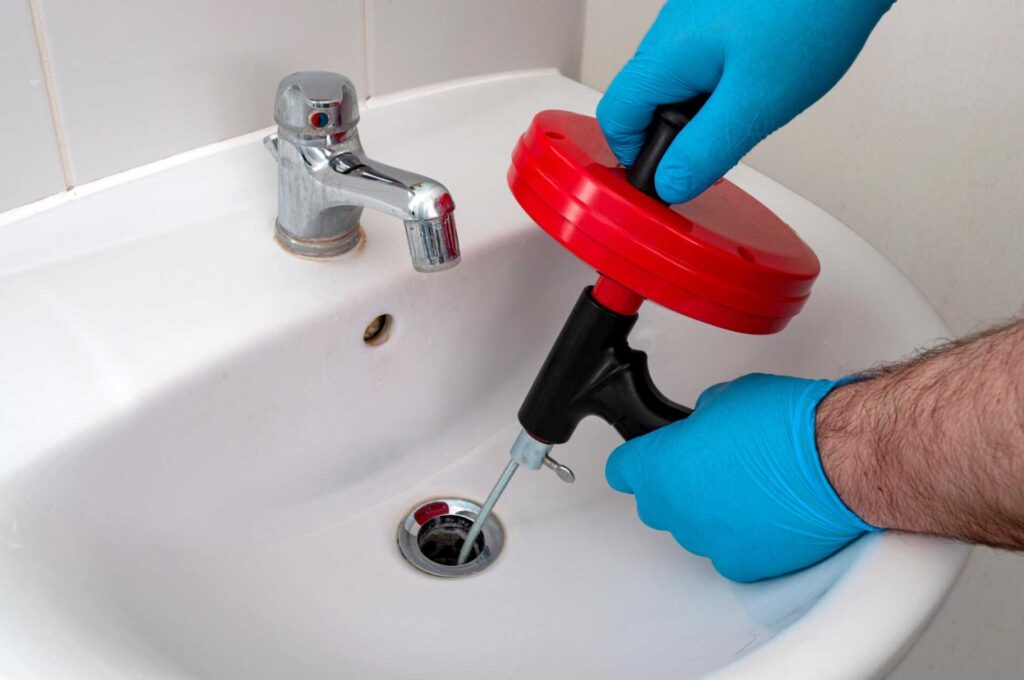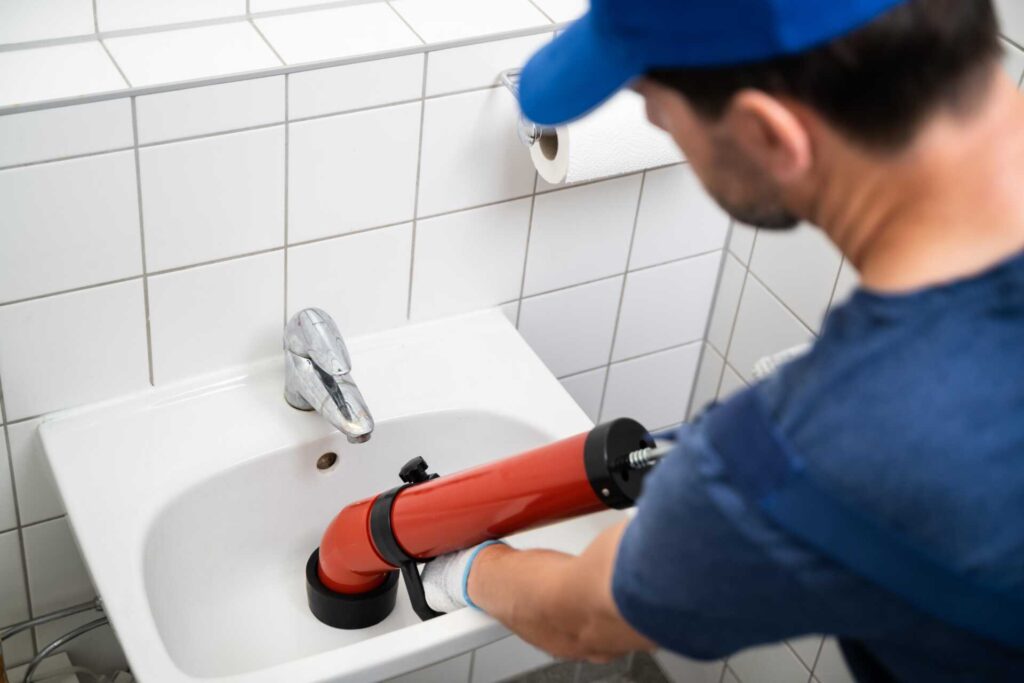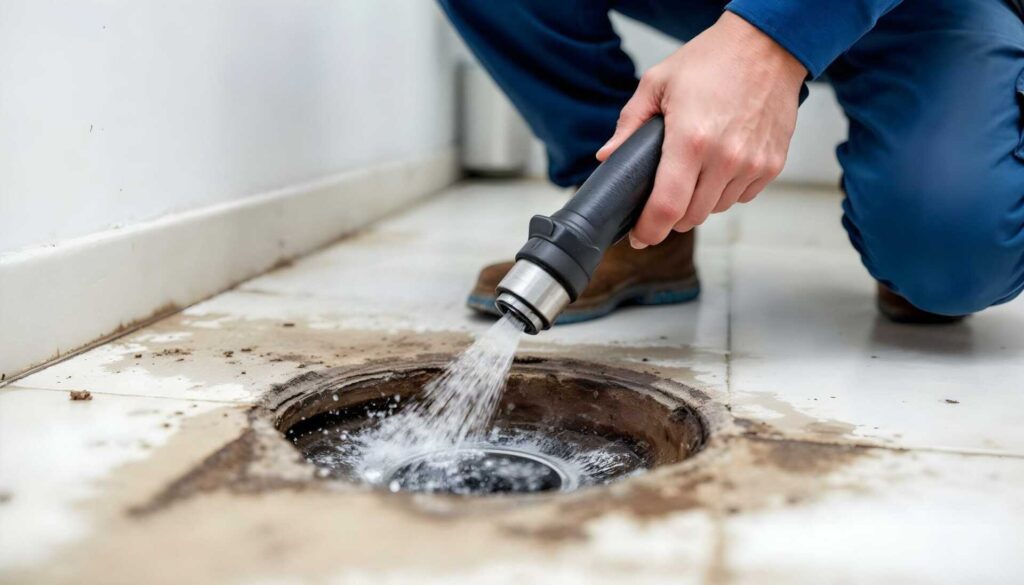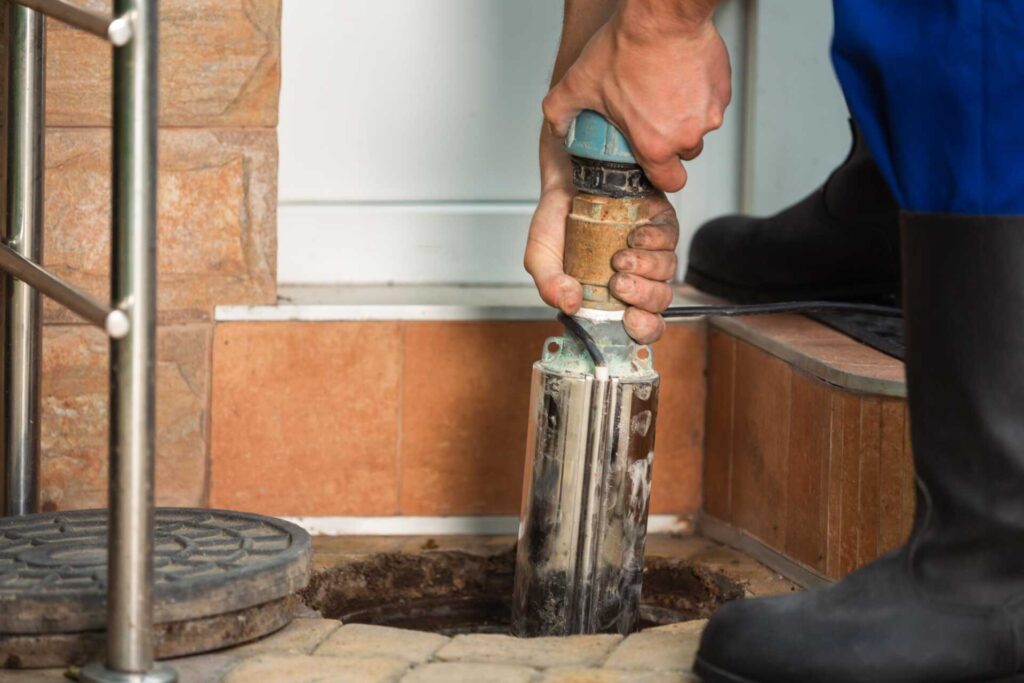
Contents
Think of your sewer system as the veins of your home; when they’re clogged, the entire body suffers. You might not realize how simple practices can save you money on sewer maintenance while prolonging the life of your plumbing. From regular drain cleaning to recognizing early signs of trouble, there are several strategies that can keep your system flowing smoothly. What if you could tackle potential issues before they turn into expensive repairs? Let’s explore some practical, budget-friendly tips that could make a significant difference in your home’s plumbing health.
Key Takeaways
- Schedule regular drain cleaning and inspections every 1 to 2 years to catch issues early and save on costly repairs.
- Use eco-friendly homemade cleaners like baking soda and vinegar to tackle minor clogs without harsh chemicals.
- Invest in PVC pipes for affordable and durable repairs to maintain your plumbing system effectively.
- Regularly check and clean drain traps to prevent debris from causing blockages in your sewer system.
- Opt for trenchless repair methods for less disruption and lower costs when dealing with sewer line issues.
Regular Drain Cleaning Practices
Regular drain cleaning practices are essential for maintaining a healthy plumbing system and preventing costly repairs. By incorporating routine drain maintenance into your household chores, you can avoid the frustrations of clogs and backups. It’s important to understand how to effectively use plumbing tools to keep your drains flowing smoothly.
Start by using a simple plunger for minor blockages. This handy tool can quickly dislodge stubborn debris without the need for harsh chemicals. For deeper clogs, consider investing in a drain snake. This plumbing tool is perfect for reaching and removing blockages that a plunger can’t handle. By familiarizing yourself with these tools, you’ll feel more confident tackling common drain issues.
In addition to using the right tools, you should establish a regular cleaning schedule. Aim to clean your drains at least once a month or more frequently if you notice slow drainage. This proactive approach helps prevent buildup that can lead to more severe problems later on. You can use a mixture of baking soda and vinegar as a natural cleaner, which will break down grease and grime without harming your pipes.
Finally, be mindful of what goes down your drains. Avoid disposing of grease, hair, or food scraps in sinks, as these items can lead to significant clogs. By following these regular drain cleaning practices, you’ll enhance the longevity of your plumbing system and foster a sense of belonging in a community that values maintaining a healthy home.
Preventative Maintenance Tips
To keep your sewer system running smoothly, you need to implement a few key preventative maintenance tips. Schedule regular inspections to catch issues early, ensure your drains stay clear of debris, and opt for eco-friendly cleaners to protect your pipes. By taking these steps, you can greatly reduce the risk of costly repairs down the line.
Regular Inspections Schedule
While many homeowners overlook their sewer systems, establishing a regular inspection schedule is crucial for preventing costly repairs down the line. Regular inspections allow you to catch potential issues before they escalate, saving you both time and money. Aim for an inspection frequency of once every 1 to 2 years, depending on your system’s age and condition.
To make the most of your inspections, create a detailed inspection checklist. This should include checking for leaks, blockages, and signs of deterioration. Pay attention to any unusual odors, slow drains, or standing water, as these can indicate underlying problems. Having a checklist ensures you won’t miss important aspects during your inspections, providing a thorough assessment of your sewer system.
Don’t hesitate to involve a professional if you’re unsure about any findings. A licensed plumber can offer expert advice and conduct more in-depth inspections when necessary. By maintaining this routine, you’ll enhance your sewer system’s longevity and contribute to a healthier home environment. Regular inspections foster a sense of community responsibility, ensuring that your home remains a safe haven for you and your family.
Keep Drains Clear
After scheduling regular inspections, keeping your drains clear is another key aspect of sewer maintenance. Clogs can lead to costly repairs and unpleasant backups, so it’s crucial to be proactive. Start by regularly checking your drain traps. These devices catch debris and prevent it from flowing into the sewer system. Clean them out monthly to ensure proper drainage.
Be mindful of what goes down your drains. Avoid pouring grease down the sink, as grease buildup can solidify and create significant blockages. Instead, collect excess grease in a container and dispose of it in the trash. You might also consider using strainers in sinks and tubs to catch hair and food particles before they enter the drain.
Every few months, flush your drains with hot water to help dissolve any buildup. If you notice slow drainage, investigate immediately; it could signal a developing problem. By staying vigilant and keeping your drains clear, you save money and contribute to a healthier home environment. Remember, a little maintenance goes a long way in preventing future headaches!
Use Eco-Friendly Cleaners
Using eco-friendly cleaners is a smart choice for maintaining your sewer system, as they help prevent harmful chemicals from entering the environment. By opting for green cleaning solutions, you protect the planet and enhance the longevity of your plumbing.
Here are three effective natural alternatives you can use:
- Baking Soda and Vinegar: This classic combination works wonders for clearing minor clogs. Pour half a cup of baking soda down the drain, followed by half a cup of vinegar. Let it sit for 15 minutes, then flush with hot water.
- Lemon Juice: The acidity in lemon juice can break down grease and grime. Mix it with hot water and pour it down your drains to keep them fresh and clear.
- Castile Soap: This vegetable-based soap is a versatile cleaner that can be used to wash dishes and clean drains. It’s biodegradable and safe for your sewer system.
DIY Clogged Drain Solutions
Clogs are often caused by hair, grease, or foreign objects, and identifying these common culprits is the first step in resolving the issue. You can create effective homemade drain cleaners using basic household ingredients or apply proper plunging techniques for immediate relief. Knowing these DIY solutions can save you time and money while keeping your drains clear.
Common Clog Causes
Understanding the common causes of clogged drains can save you time and money as a homeowner. By identifying these issues early, you can implement effective clog-prevention strategies and maintain proper drain hygiene. Here are three common clog causes to watch for:
- Hair and Soap Scum: In bathrooms, hair can easily accumulate and combine with soap residue, leading to stubborn blockages.
- Food Waste: In kitchens, disposing of grease, coffee grounds, and fibrous foods down the drain can quickly form clogs. Even small amounts can add up over time!
- Foreign Objects: Items like toiletries, wipes, or toys can accidentally get flushed or washed down, creating immediate obstructions.
Homemade Drain Cleaners
When faced with a stubborn drain blockage, you might consider turning to homemade drain cleaners before opting for commercial products. These DIY solutions save you money and help you avoid harsh chemicals that can harm the environment.
A popular method involves using a baking soda and vinegar mixture. Start by pouring half a cup of baking soda down the drain, followed by half a cup of vinegar. Let it fizz for about 30 minutes, then flush with hot water. This combination helps break down grease and debris.
Another effective option is a lemon juice and baking soda solution. Mix half a cup of baking soda with half a cup of lemon juice, pour it down the drain, and let it sit for 30 minutes. Rinse with hot water to clear away any residue.
For a salt solution, mix one cup of salt with two cups of hot water. Pour this mixture into the drain and let it work its magic for a few hours before rinsing. These homemade cleaners are simple, cost-effective, and can often do the trick when you’re dealing with minor clogs.
Effective Plunging Techniques
After trying homemade drain cleaners, you might find that some blockages require a bit more muscle. Using a plunger can effectively clear stubborn clogs, but it’s essential to use the right techniques and tools. Different plunger types serve specific purposes, so let’s explore the best plunging techniques for you.
- Choose the Right Plunger: Use a cup plunger for sinks and a flange plunger for toilets. The flange design creates a better seal, enhancing suction.
- Positioning: For sinks, fill the basin with enough water to cover the plunger’s cup. For toilets, verify the bowl’s water level is sufficient. This water aids the plunging process.
- Plunge with Purpose: Place the plunger over the drain, ensuring a tight seal. Push down firmly, then pull up sharply. Repeat this motion quickly for 15-20 seconds, maintaining the seal.
If the clog persists, don’t hesitate to review your techniques or consider seeking professional help. With practice, you’ll gain confidence in tackling clogs, making those plumbing challenges a little less intimidating!
Signs of Sewer Line Issues
As homeowners, recognizing the signs of sewer line issues early can save you from costly repairs and extensive damage. One of the most telling indicators is a persistent sewer odor. If you notice a foul smell in or around your home, it could mean that your sewer lines are cracked or leaking. This odor isn’t just unpleasant; it can also pose health risks.
Another common sign is slow drainage. If water takes longer than usual to drain from sinks, tubs, or toilets, there could be a blockage or a problem with the sewer line. You might find yourself frequently reaching for the plunger, but if the issue persists, it’s time to investigate further.
Additionally, watch for gurgling sounds coming from your drains. This noise can indicate air trapped in the plumbing due to a blockage or damage in the sewer line.
Keep an eye on your yard as well. Patches of overly lush grass or wet spots can suggest a sewer leak beneath the surface. If these areas have an unusual odor, it’s definitely a concern.
Finally, if you notice frequent backups, especially when using multiple fixtures simultaneously, it’s a strong sign that your sewer line needs immediate attention.
Staying vigilant about these signs can help you address sewer line issues before they escalate, ensuring your home remains safe and comfortable for you and your family.
Affordable Hydro Jetting Benefits
Hydro jetting is an effective and affordable solution for maintaining your sewer lines and ensuring they operate smoothly. This innovative method uses high-pressure water jets to clear out stubborn clogs and buildup in your plumbing system. By investing in hydro jetting, you can considerably improve your plumbing efficiency while enjoying several key hydro jetting advantages.
- Thorough Cleaning: Unlike traditional methods, hydro jetting penetrates deep into pipes, removing grease, roots, and mineral deposits. This extensive cleaning helps prevent future blockages.
- Cost-Effective: Regular hydro jetting can save you money in the long run by reducing the need for more extensive repairs caused by neglected sewer lines. A clean system is less likely to experience costly emergencies.
- Environmentally Friendly: Hydro jetting relies solely on water, making it a greener option compared to chemical drain cleaners. You can maintain your plumbing without harming the environment or your home.
Cost-Effective Repair Options
When you encounter plumbing issues, exploring cost-effective repair options can save you both time and money. First, consider using cost-effective materials that won’t break the bank. PVC pipes are a popular choice for many homeowners due to their affordability and durability. They’re lightweight, easy to install, and resistant to corrosion, making them an excellent option for budget repairs.
Next, you might want to tackle small leaks or cracks yourself. Using pipe sealant or epoxy putty can be a straightforward solution. These materials are inexpensive and easy to apply, allowing you to handle minor repairs without calling in a professional. Just verify the area is clean and dry before applying.
For sewer line issues, opting for trenchless repair methods can also be a budget-friendly choice. While it may require a higher initial investment than traditional methods, it often results in less damage to your landscape and lower overall repair costs. This approach minimizes disruption and can save you money in the long run.
Lastly, don’t underestimate the power of regular maintenance. Simple actions like clearing debris, checking for leaks, and using enzyme cleaners can help prevent costly repairs down the line. By being proactive and utilizing cost-effective materials and methods, you can manage your sewer repair needs without straining your finances. Remember, a little effort today can lead to significant savings tomorrow.
Choosing the Right Professionals
After exploring cost-effective repair options, you may find that some plumbing issues require professional expertise. Choosing the right professionals can save you time, money, and frustration. To ensure you make an informed decision, follow these steps:
- Evaluating Credentials: Look for licensed and insured plumbers. Verify their qualifications and ask for references. A reputable professional will be happy to share their credentials and past work experiences.
- Comparing Quotes: Once you’ve shortlisted potential candidates, request detailed quotes. Don’t just focus on the bottom line; examine what services are included. This helps you understand the value being offered and ensures there are no hidden fees.
- Reading Reviews: Check online reviews and ask your neighbors for recommendations. Learning about others’ experiences can provide insights into the reliability and quality of a professional’s work.
Taking these steps will help you find a trustworthy plumbing professional who meets your needs. It’s crucial to feel confident in your choice, as a skilled plumber can effectively manage your sewer maintenance, preventing future issues. By evaluating credentials, comparing quotes, and reading reviews, you’ll be part of a community that prioritizes quality and affordability. Remember, investing in the right professional can lead to long-term savings and peace of mind. Regarding your home’s plumbing, you deserve nothing but the best.
Wrap-Up
By adopting these budget-friendly sewer maintenance tips, you can transform potential plumbing disasters into manageable tasks. Picture a clogged drain, a source of stress, contrasted with the peace of mind from regular inspections and eco-friendly cleaning methods. Investing time in preventative practices today saves you from costly repairs tomorrow. Just as a well-tended garden flourishes, so will your plumbing system thrive with proper care, ensuring it serves you efficiently for years.



